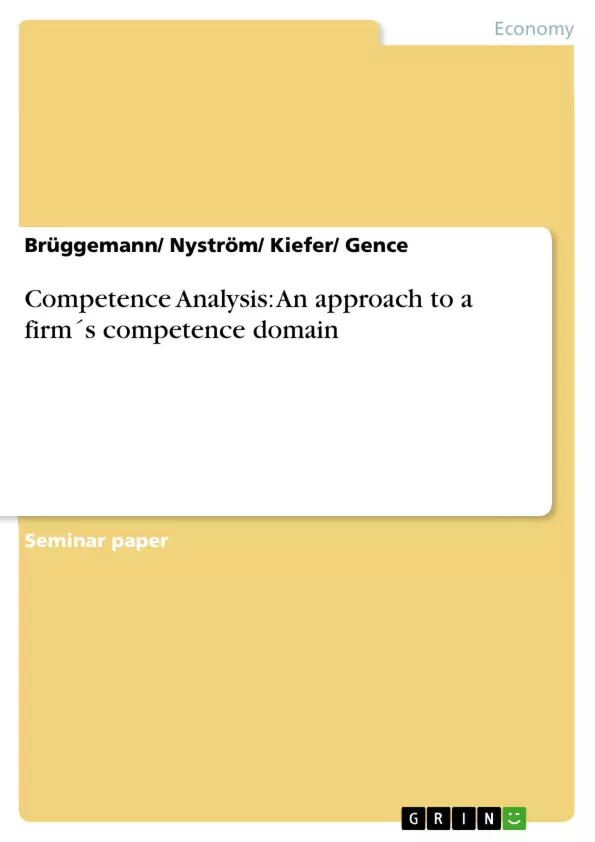Staying one step ahead of competition requires a sufficient short and long term strategy. To formulate these strategies it is of great importance to analyse the inner competence of a firm. For the last decades several researchers have been developing different approaches to determine idiosyncratic factors generating sustainable competitive advantage (SCA) by a value creating strategy.
In the analytical discussion we have developed our own model by considering the existing approaches and adding some new important factors as driver and forces of SCA. Thus, the model is applied to Peugeot to show its feasibility. The model shows the synergy through the collective learning between the internal factors: resources, capabilities, competences, core competence; and the external factors: customer relationship, competitors and stresses the importance of interaction between these factors to shape the SCA of a firm placed in a highly competitive market.
Table of Contents
- 1. INTRODUCTION.
- 1.1 PROBLEM DISCUSSION..
- 1.2 PROBLEM FORMULATION.
- 1.3 PURPOSE.
- 1.4 CHOICE OF COMPANY...
- 2. THEORY PART.
- 2.1 RESOURCE-BASED VIEW (RBV).
- 2.2 COMPETENCE-BASED VIEW...
- 2.3 DYNAMIC CAPABILITIES APPROACH..
- 3. EMPIRICAL PART
- 4. ANALYTICAL DISCUSSION
- 4.1 DEFINITION OF TERMS
- 4.2 PRESENTATION OF MODEL..
- 4.3 EVALUATION OF MODEL.
- 5. CONCLUSION
- 6. REFERENCES
- APPENDIX.
- APPENDIX 1: PSA-GROUP..
Objectives and Key Themes
This project aims to analyze the competence domain of a firm, focusing on identifying sources and drivers of sustainable competitive advantage (SCA). The project utilizes existing theoretical frameworks and proposes a new model for analyzing SCA, applying it to Peugeot as a case study. The project investigates the interplay between internal and external factors and their impact on the firm's SCA in a competitive market.
- Resource-Based View (RBV)
- Competence-Based View
- Dynamic Capabilities Approach
- Collective Learning
- Sustainable Competitive Advantage (SCA)
Chapter Summaries
- Introduction: This chapter introduces the key approaches on the competence domain and highlights the role of various theories in understanding sources and drivers of SCA. It presents the problem formulation and introduces the case company, Peugeot.
- Theory Part: This section examines three main theoretical frameworks: the Resource-Based View (RBV), the Competence-Based View, and the Dynamic Capabilities Approach. It discusses the strengths and limitations of each approach in relation to understanding SCA.
- Analytical Discussion: This chapter defines key terms and presents the project's developed model for analyzing SCA. The model emphasizes the interplay between internal factors (resources, capabilities, competences, core competence) and external factors (customer relationship, competitors). The chapter evaluates the model's feasibility.
Keywords
This project centers around key concepts like sustainable competitive advantage, competence-based view, dynamic capabilities, resource-based view, collective learning, internal factors, external factors, and customer relationship. The project focuses on applying these concepts to understand the competence domain of Peugeot, a company in the automotive industry.
- Arbeit zitieren
- Brüggemann/ Nyström/ Kiefer/ Gence (Autor:in), 2004, Competence Analysis: An approach to a firm´s competence domain, München, GRIN Verlag, https://www.grin.com/document/29401



